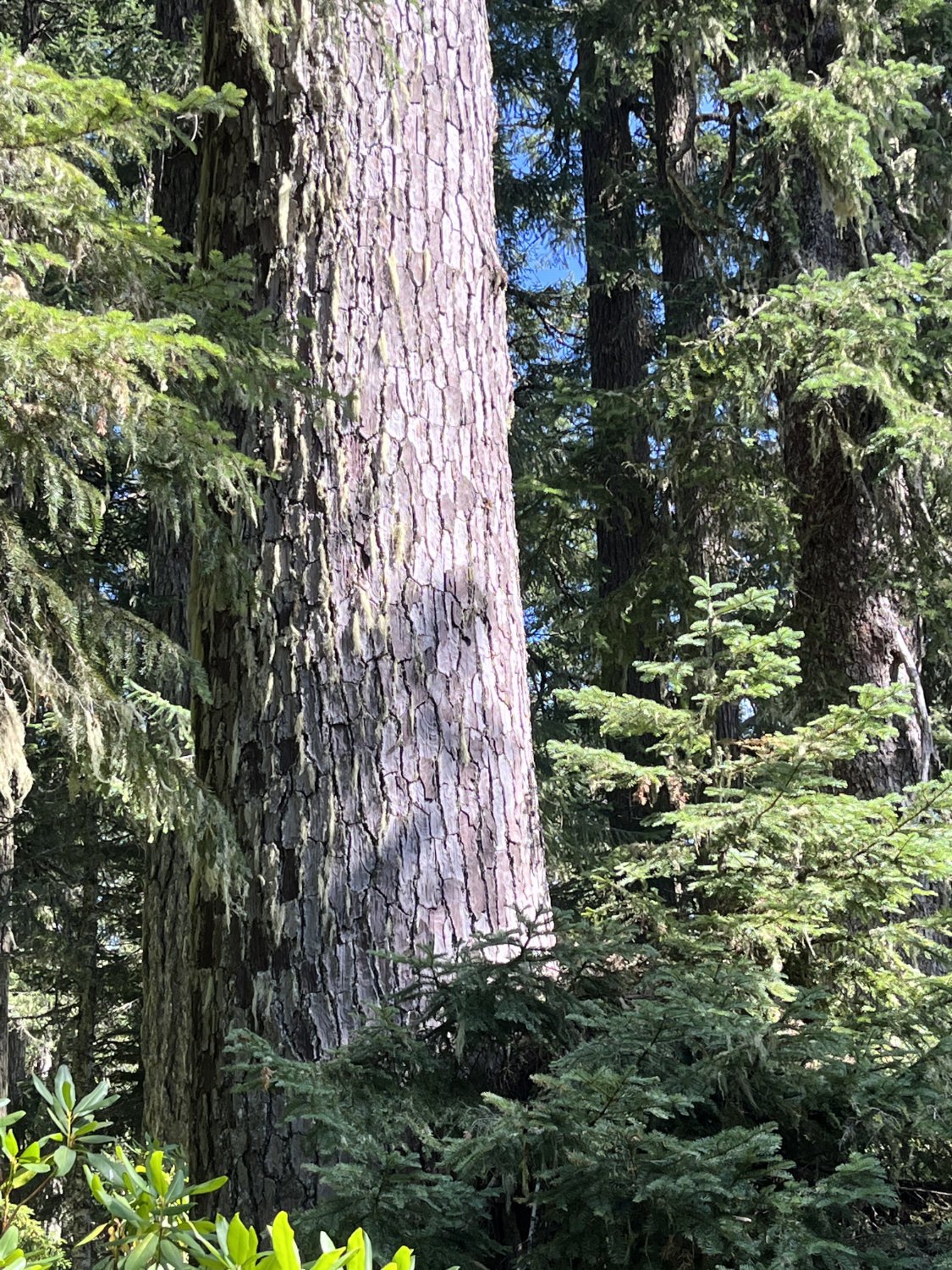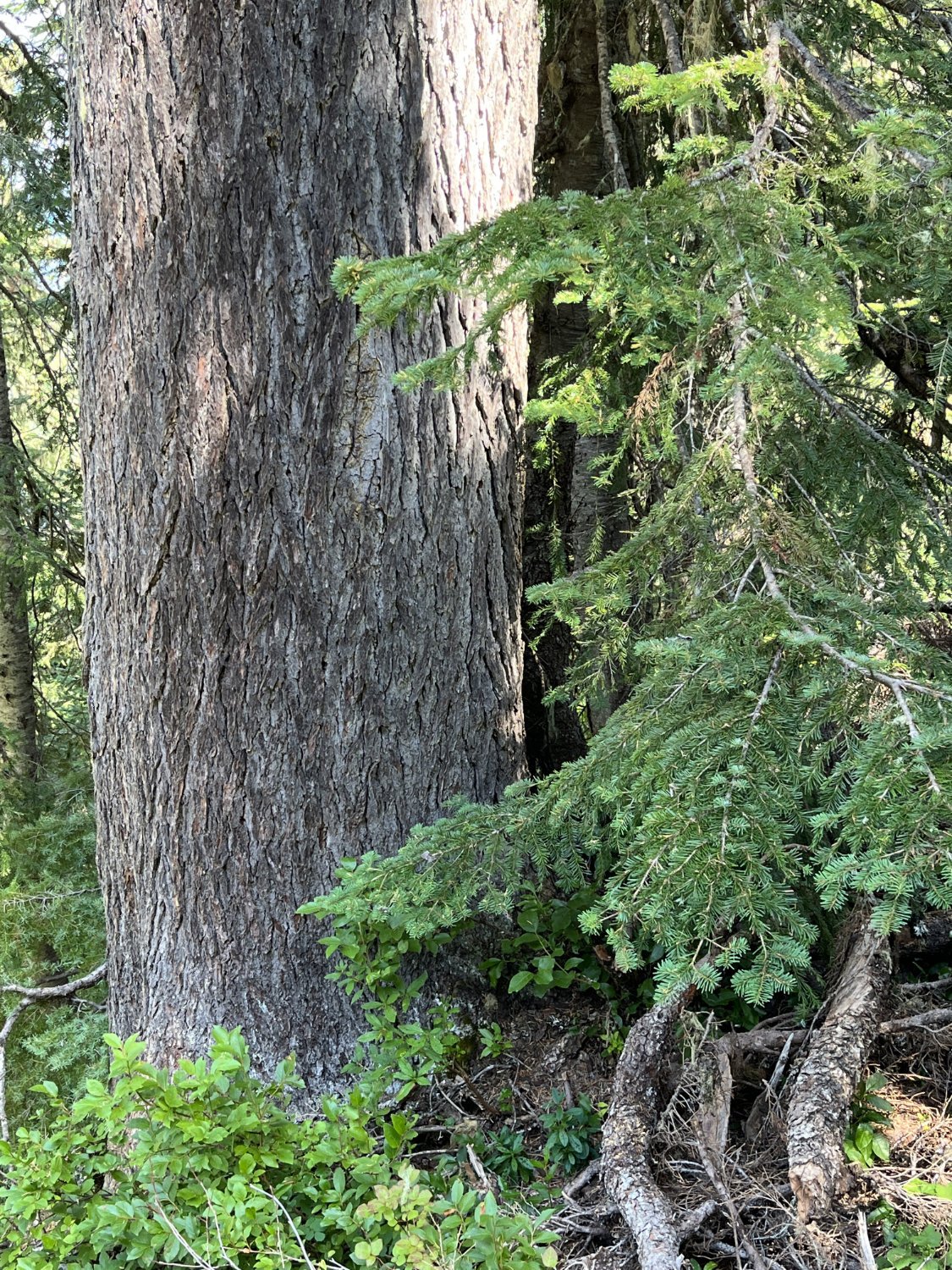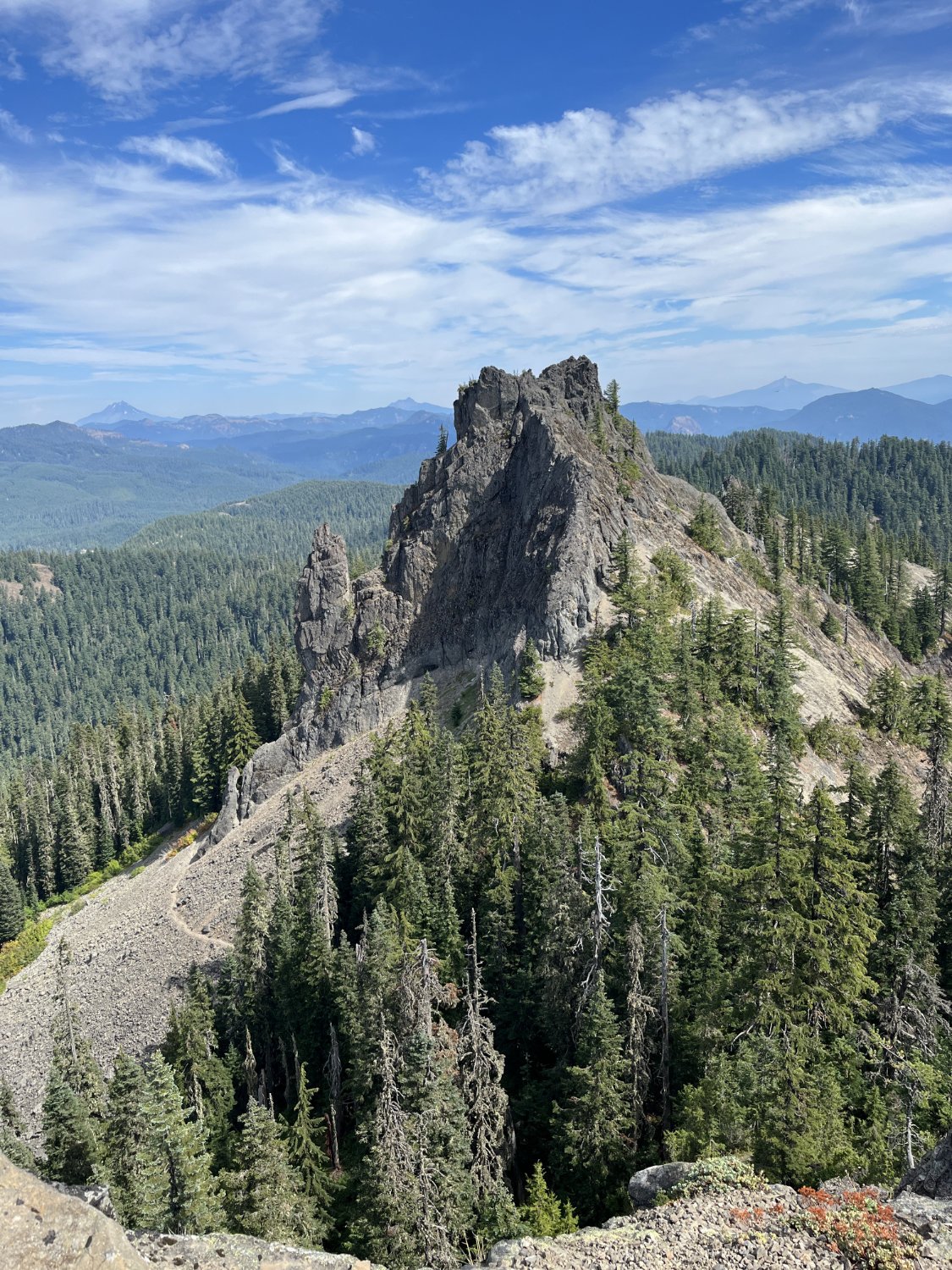
23. Tidbits Mountain
Summary
Length – 2.25 miles one way
Difficulty – Moderate
Season – Summer to autumn
Elevation range –4,080 feet – 5,185 feet
Human imprint - Moderate (nearby roads and clearcuts)
Information - Willamette National Forest, McKenzie River Ranger District
Primary old growth features
Mid elevation transition forest of large Douglas-fir, western hemlock and noble fir.
Description
Magnificent old forest on the upper slopes of Tidbits basin borders a little-used and infrequently maintained trail to the top of Tidbits Mountain. The Tidbits Mountain Trail (3328) crosses several ecological zones, demonstrating the influence of elevation and aspect (the direction the slope faces) on the plant species able to dominate a site. Sensational views of the Oregon Cascades richly reward hikers reaching the summit.
The trail quickly enters an impressive old-growth forest on a warm, southwest-facing slope. Huge Douglas-fir and massive western hemlock dominate this splendid stand. As the trail nears the ridgeline, cold-hardy noble fir and Pacific silver fir mingle in. The coarse, bluish crowns of noble fir and the smooth, silver bark of Pacific silver fir provide diagnostic clues.
Take the left fork at a trail junction in the saddle 1.5 miles from the trailhead, crossing over to the colder, north side of Tidbits Mountain. Douglas-fir and western hemlock are replaced by mountain hemlock and Pacific silver fir, species better adapted to cooler temperatures and a persistent snowpack. Continue through talus slopes beneath a multi-pinnacled peak until reaching another trail junction on the west side of the mountain. Turn sharply left and scramble up to the mountaintop, site of a former lookout and current target of dive-bombing cliff swallows.
Tidbits Mountain sits astride the divide between predominately federally managed land to the east and predominately private land to the west. Three distinct zones are evident: uncut wilderness along the crest of the Cascades; rapidly recovering dispersed clearcuts on federal lands to the east; and industrial, private lands clearcut in larger blocks still being harvested today. Views to the east range from Mount Hood to Diamond Peak. Marys Peak, the highest point in the Oregon Coast Range, is visible to the west.
After returning to the trail junction in the saddle, hikers can extend the hike by continuing northeast on the Gold Hill Trail (3370), following the ridgeline through attractive old-growth forest for another couple miles.
25 years of change
Change has been gradual with more open forest in places along with more snags and down wood. Old clearcuts on federal land to the east are becoming less distinct from adjacent older forest with age.
How to get there
From the McKenzie Highway (State Route 126) approximately 48 miles east of Eugene, turn left (north) onto Forest Road 15 toward Blue River Reservoir. Stay left onto gravel-surfaced FR 1509 shortly after crossing the bridge over Blue River at 4.8 miles. Wind your way up the basin on FR 1509 for 8.4 miles, then turn left onto FR 877. Trailhead parking is on a short but steep and rutted spur to the left less than a quarter mile later. Consider parking on FR 1509 and walking up FR 877 if your vehicle is not well suited to steep gravel pitches.

Classic Douglas-fir old growth

Noble fir

Noble fir

Mountain hemlock

Tidbits Mt
